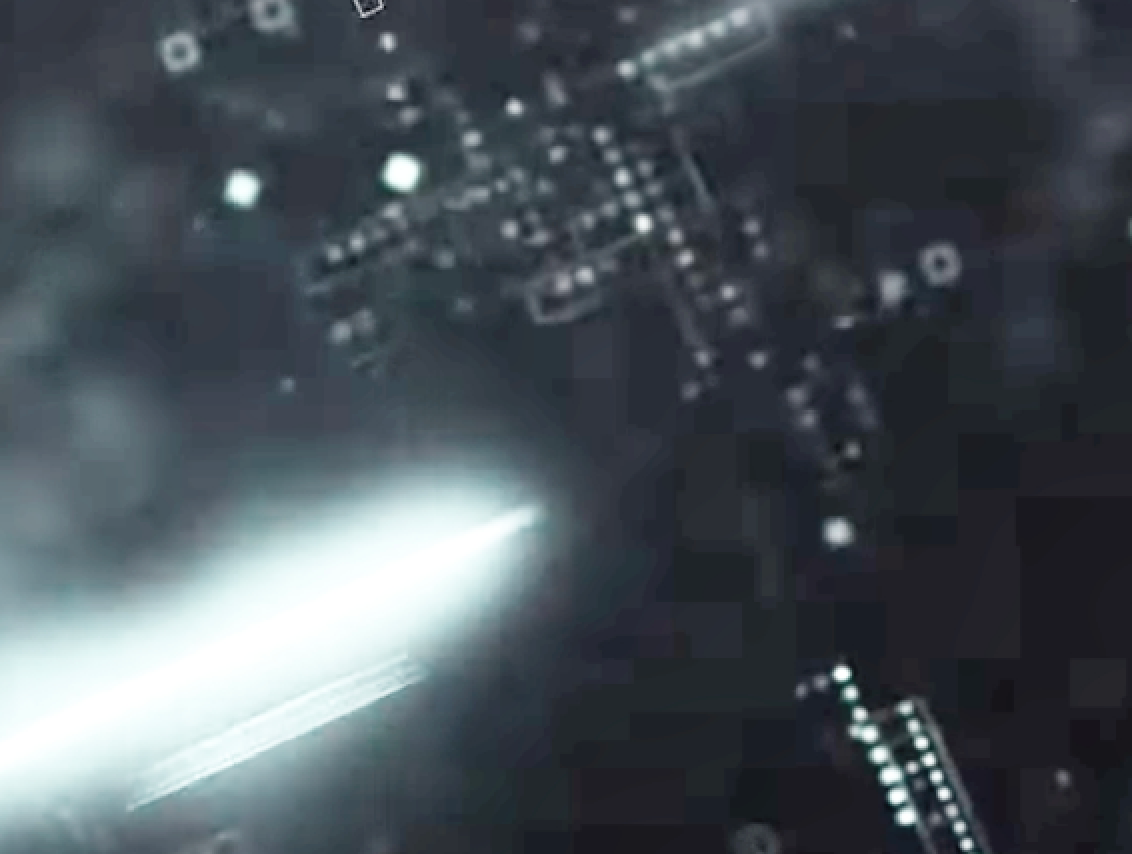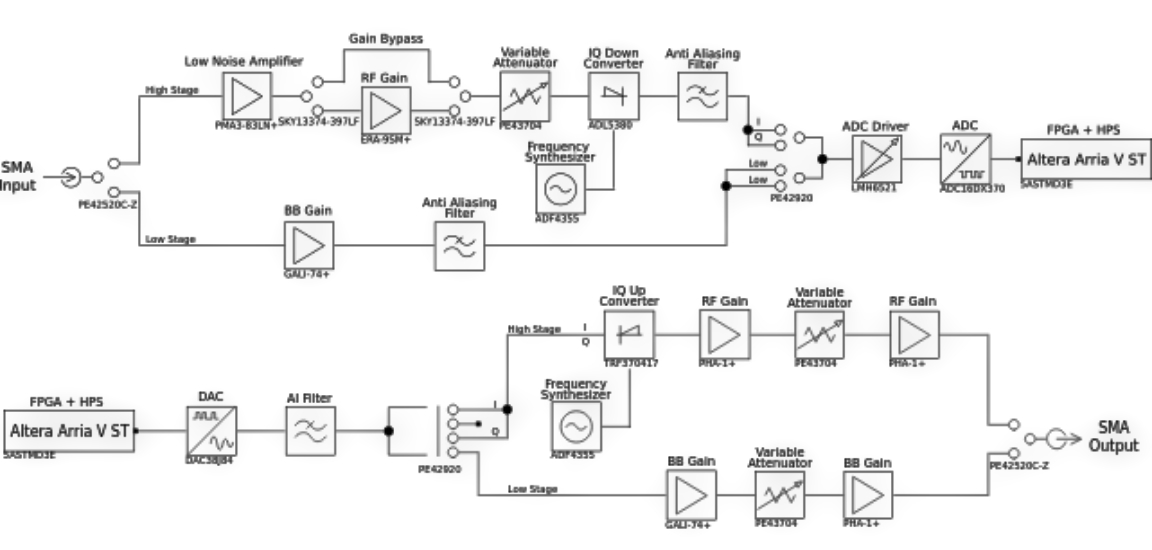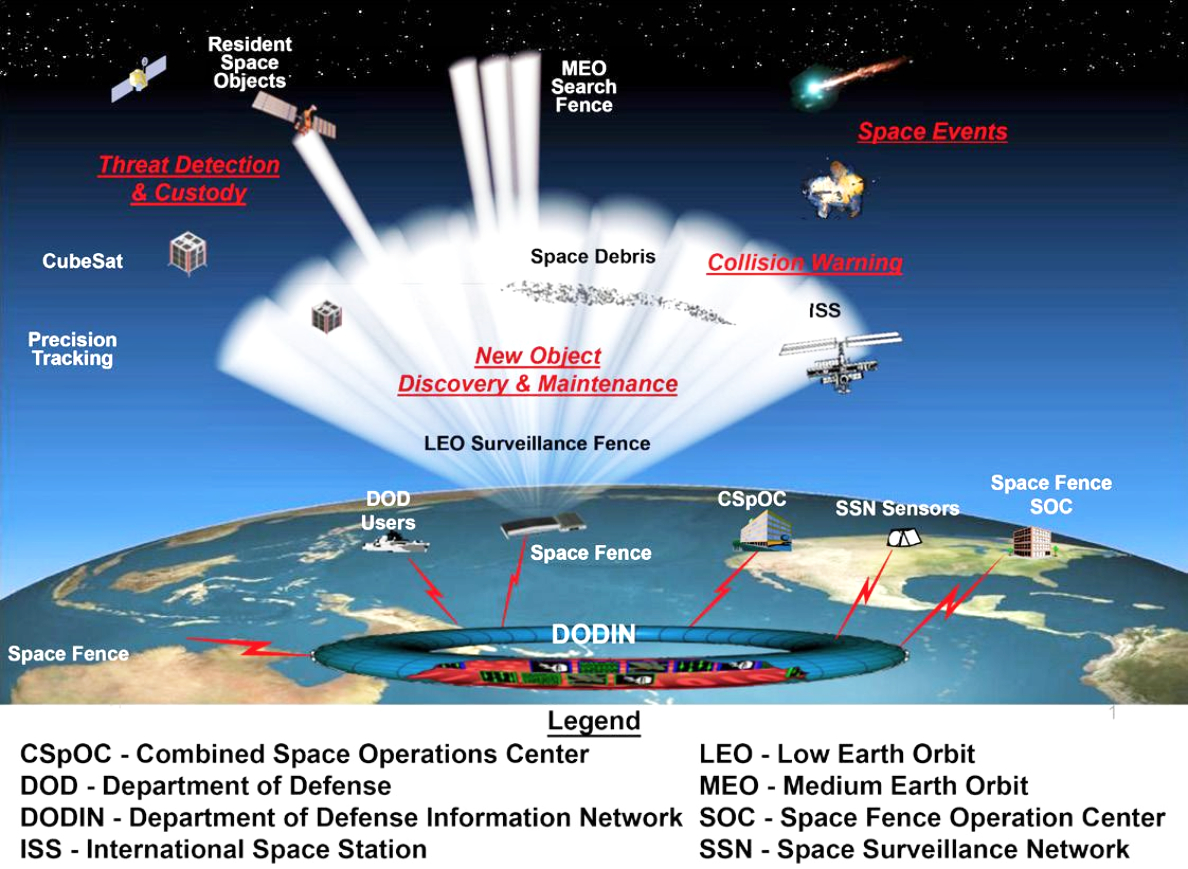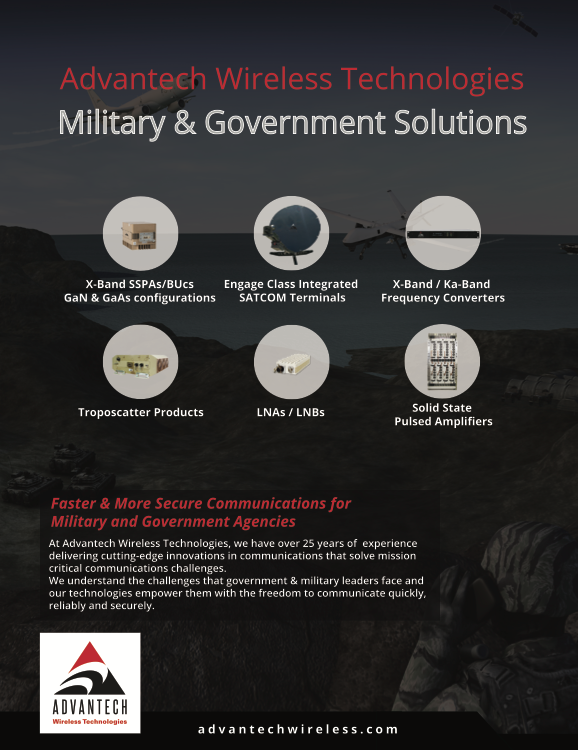
Space Situational Awareness and
Space Domain Awareness (SSA) (SDA)
serve an important role in protecting satellites
from hazards and collisions.
Software Defined Radio (SDR) can be integrated
into SSA systems to great effect.
What is space situational awareness (SSA) and space domain awareness (SDA)?
Space Situational Awareness (SSA) and Space Domain Awareness (SDA) refer to the detection of any potential hazard in a satellite’s orbit, whether active or passive, by analyzing and forecasting the kinematic state and other attributes of space objects.
The main objective of SSA/SDA is to provide continuous and accurate tracking and surveillance of such potential hazards and to inform satellite operators of such conditions when they occur, thereby providing greater safety and success of the space missions.
Certain factors such as space/spacecraft debris, other satellites in space, frequency interference, and space weather phenomenon pose some serious risks to satellite systems in space. SSA/SDA monitors and minimizes these risks and also helps to manage space traffic by ensuring that the satellite orbit is not obstructed. In short, SDA helps in the decision-making process by providing timely and measurable evidence related to space threats.
A Brief History Of SSA/SDA
Missile warning systems during the cold war led to the birth of SSA/SDA information. At that time, the U.S. Department of Defense (DoD) was the only player who was actively involved in providing crucial information to satellite operators.
However, today that scenario has changed, with many commercial and state entities capable of SSA/SDA. This is largely due to the satellites orbiting in space increasing dramatically over the last, few decades. It is estimated that there are currently 2,787 satellites actively orbiting in space. For these reasons, the DoD SSA system and service is unable to continuously monitor all of the threats to each of these satellites all of the time.
Satellite operators also feel that the DoD SSA system and service cannot meet their demands for safer operations. Moreover, NORAD’s two-line element set which has been used for decades for orbital determination is now considered inaccurate.
The increase in space debris due to human-caused disasters highlighted the need for a system that can precisely track space objects. One such disaster occurred when a Chinese retired weather satellite FY- 1C (Fengyun-1C) was struck by a Chinese anti-ballistic missile test in January of 2007. The FY-1C spacecraft was completely destroyed in this collision which led to the creation of a cloud of more than 3,000 pieces of space debris.
A second major incident occurred in February of 2009, when a functioning U.S. Iridium communications satellite (Iridium 33) and a derelict Russian Cosmos 2251 communications satellite (orbital altitude 800 km) collided. This collision resulted in 2,000 pieces of space debris into LEO. It is estimated that most of this space debris will remain in orbit for decades to come and that will pose a significant collision threat to satellites in Low Earth Orbit (LEO).
Reasons Why SSA/SDA Is Needed
The increasing amount of space debris and satellites orbiting the Earth makes it clear that SSA/SDA is greatly needed, as 95 percent of currently tracked objects in space are dead payloads, stray hardware, rocket boosters, and other inert bodies. Usually, these objects are larger than 10 cm; however, it is known that there are millions of untracked objects smaller than that size in space. The need to continuously keep satellites operational is due to their fundamental role in monitoring infrastructure, GPS, communications, and national security.
The number of satellite operators/companies is also increasing, which demands a centralized SSA/SDA. Each year, hundreds of millions of dollars are spent to navigate the satellites and spacecraft safely in space. According to Joint Space Operations Centre (JSpOC), in the past few years, there have been hundreds of thousands of satellite collision warnings.
Some of these warnings even indicated a collision probability of 44 percent and that misled satellite operators into making inaccurate decisions, such as propelling satellites into different orbits unnecessarily and consuming valuable resources, all the while potentially causing even greater risks.
Challenges To Be Addressed In SSA/SDA Systems
It is essential to address the challenges in the modern SSA/SDA system for effective space surveillance. The primary challenge is that some satellites do unpredictably change their orbits. During the past few years, many countries and companies have sought to increase their space mission capabilities. Certain activities such as electronic thrusting and automation alter the orbit of the satellite. These activities can cause the orbits to become non-Keplerian and difficult to predict.

Figure 1: A high-level overview of Per Vices Rx (top) and Tx (bottom) boards is displayed. Click to enlarge.
Moreover, smallsats in LEO can change their orbits by positioning themselves in such a way that atmospheric drag is increased. These satellites significantly change their trajectory in such a way that is difficult to predict their new orbits.
Other challenges are related to the smaller size of electronics. Advancements in technology are making electronics smaller and more power-efficient and that entails the use of fewer solar panels and decreasing the size of satellites. The smaller the satellite is, the more difficult that unit becomes to detect with instruments such as telescopes or radar, or by other means. Such satellites include cubesats, which are becoming increasingly widespread in use. They are 10 cm cubed and difficult to track.
Integrated Of SDRs Into SSA/SDA Systems
What is an SDR? That acronym represents Software Defined Radio (SDR), a radio communication system that employs software to implement the many functions that are required to receive and transmit radio signals.
The front end of an SDR contains the receive (Rx) and transmit (Tx) functions, such as those shown in Figure 1, to receive signals over a varying tuning range. These radio chains provide extremely high bandwidths of up to 3 GHz and independent ADCs/DACs for each channel. One of the highest bandwidth SDRs is Cyan by Per Vices which has 16 independent TX and RX chains and a tuning range from 0-18 GHz (upgradeable to 40 GHz). The digital back end of the SDRs contains an FPGA with on-board DSP capabilities. such as modulation, demodulation, upconverting, and down-converting, along with additional capabilities for DSP algorithms and radio protocols. (See Figure 1 on the following page...)
What Is The State-Of-The-Art In SSA/SDA?
In today’s environment, where a large number of man-made satellites are already orbiting in space, it has become essential to have a complete, operational picture of SSA/SDA. Many companies are offering actionable insights by analyzing and combining the relevant data to support accurate decisions.
One such commercial SSA, offered by Kratos Defense and Space, has a global network of RF monitoring sites and sensors with more than 80 antennas. Other systems, such the Space Fence System (SFS), employ a considerable radar array to monitor space debris. Shown in Figure 2, SFS is the most recent program operated by the U.S. Space Force, becoming operational in March 2020. SFS will replace the aging U.S. based AFSSS (Air Force Space Surveillance System) which was installed in 1961.

Figure 2.
This system provides information to the U.S. led JSpOC (Joint Space Operation Center), which tracks space traffic and issues collision warning threats to global satellite operators. Based on these warnings, the satellite operators can move their spacecraft out of harm’s way. An additional state-of-the-art systems that is currently being developed is Britain’s Deep-space Advanced Radar Capability (DARC), which will offer better accuracy, increased capacity and agile tracking.
Researchers from the University of Arizona have proposed an SDIF (Space Domain Information Fusion) model that defines six levels (ranging from 0 to 5) of an SDA system. In level 0, the raw data enters the system and is then stored in level 1. The data in the form of beliefs and knowledge is subjected to strict scrutiny in level 2 of the model. In level 3, users provide their questions and decision-making criteria. For instance, for one user, an object that is 1 km away from a space asset might be threatening, whereas another user may be comfortable with a space object that is 100 meters away from the space asset. Decisions based on the criteria defined in level 3 are made in level 4. Any result from level 4 that needs further information is passed to level 5, where sensors and information sources are instructed to collect new information. (See Figure 2 on the following page.)
Capabilities Of Modern SSA/SDA
Modern SSA/SDA equips satellite operators with all essential information that can almost guarantee a successful and safe operation in space. Modern SSA/SDA determines the orbit of another satellite or debris in the space as well as any change in the orbital trajectory of the satellite’s propulsion/thruster. They also detect RF interference by offering real-time monitoring and detection of EMI, in addition to providing geolocation and mitigation strategies.
Today, SSA/SDA plays a fundamental role in satellite surveillance in space. These systems track the long-term performance of the satellite and provide access to its vulnerabilities. They also offer bandwidth services that include monitoring the efficiency of transponders, determine effectiveness, and assess anomalies in L-/S-/C-/X-/Ku-bands often used for satellite uplinking/downlinking. NASA uses a tactical tool known as CARA (Conjunction Assessment Risk Analysis) to prevent collisions in space. CARA refers to the process of analyzing conjunction events to identify the associated threat to the asset. The main goal of CARA is to safeguard the orbital environment from the collision between NASA non-human space flight missions and other tracked and classified objects in orbit. The tactical tool analyzes the conjunction event to assess any related threat to the satellite.
As an example, CARA helps to avoid incidents with a collision on launch assessment (COLA), essentially screening a powered flight trajectory against a catalog of pre-launch missions. This assessment system has the objective of establishing launch times/windows which are not forecasted to result in a close approach during flight.
The SDRs Role In SSA/SDA Systems
SSA/SDA systems can benefit from SDRs as they help to test and simulate uplink/downlink modulation or demodulation schemes employed in satellite positioning or ranging communications. They also help in inter- satellite tracking. FPGAs can execute DSP for different calculations in inter-satellite communication such as received signal strength (RSSI) and two-way ranges and Doppler shifts. These calculations help to estimate relative ranges between satellites in space.

Figure 3: Per Vices’ Cyan is an SDR that allows MIMO. Brandon
Modern FPGA systems enable real-time adaptive beamforming for phased array radar used in such SSA/SDA systems. SDRs are characterized by their low noise floor and high SFDR for identifying weak signals in RSSI-based tracking systems. SDRs offer low latency and high throughput wireless links, vital for a timely delivery of SSA/SDA data to satellite operators.
Companies, such as Per Vices, are offering the lowest latency SDRs, which are capable of meeting or exceeding customer needs for low latency requirements. Phased array radars employed in satellite tracking ground stations require MIMO (Multiple Input Multiple Output) capabilities. Per Vices also offers MIMO SDR which employs MIMO technologies. MIMO SDRs by Per Vices, like that pictured in Figure 3, possess as many as 16 RF channels for MIMO operations and dynamic configurations.
Tens of thousands of objects are present orbiting around the Earth. SDA/SSA helps to develop and maintain comprehensive data of the location and nature of the objects present and plays an active role in identifying orbital debris to reduce the risk of collision in space with satellites and/or space shuttles.

A highly responsive and accurate SDA/SSA system is often driven by advanced algorithms and a diverse global network of radar systems and telescopes is used to supports the decision-making process of satellite operators. Timely decisions based on reliable information provided by SSA/SDA system culminate in the success of satellite missions in space.
SDRs are playing a significant role in this field, due to the high performance capabilities in both the radio front end and the digital backend featuring an FPGA for advanced DSP.
www.pervices.com/

Brandon McHugh
Author Brendon McHugh is a Field Application Engineer and Technical Writer at Per Vices. He possesses a degree in theoretical and mathematical physics from the University of Toronto.
Author Rafia Shabbir is a top rated technical writer and educational content developer who is passionate about writing on software, tech and educational topics.


